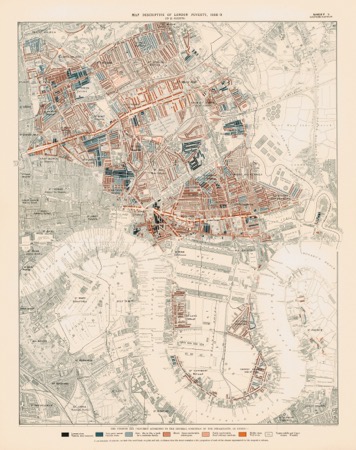Menu

 Over the last month or so, I have been emphasising the need for lots of small projects, either focused on resolving immediate issues or changing the substrate or energy gradient of the system. I’ve also been reminding people of Nonaka’s famous dictum of change needing to be middle-bottom-up. Indeed, the last thing you want to be is the CEO’s pet project as a recent article in the New York Times highlighted. I’ve never understood the irrational belief of people who want to do novel things that it’s all about top-down sponsorship when it’s the senior middle managers who have the real problems and make things work over a longer time scale. Indeed, one of the problems of being a modern leader is that there are too few checks and balances on wilder ideas, and you only get to hear what you want to hear until it’s too late to make a course correction.
Over the last month or so, I have been emphasising the need for lots of small projects, either focused on resolving immediate issues or changing the substrate or energy gradient of the system. I’ve also been reminding people of Nonaka’s famous dictum of change needing to be middle-bottom-up. Indeed, the last thing you want to be is the CEO’s pet project as a recent article in the New York Times highlighted. I’ve never understood the irrational belief of people who want to do novel things that it’s all about top-down sponsorship when it’s the senior middle managers who have the real problems and make things work over a longer time scale. Indeed, one of the problems of being a modern leader is that there are too few checks and balances on wilder ideas, and you only get to hear what you want to hear until it’s too late to make a course correction.
Now, while all of this has seemed self-evident to me over the years and has been reflected in many of our methods and tools, I’ve been sensing over the last five to seven years an underlying pattern that links back into quantum mechanics, biological scaffolding a range of other natural science material. The move of biology, or at least micro-biology, away from taxonomies was crucial. Part of the reflection process attempts to distil practice and theory into reasonably simple and ideally memorable heuristics. I did that some years ago with Knowledge Management; the seven I identified have stood the test of time. I composed numbers one, two and seven of those in a state of anger (and a prominent consultancy speaker who proceeded me was the provocation) in five minutes on the Novartis Campus in Basel over two decades ago. Still, they distil almost a decade of theory and practice. I find that simple forms of complex, longitudinal understanding tend to come together quickly in conditions of righteous indignation, one of the more creative types of stress.
I also used the same approach when identifying three aspects of managing a complex system. There isn’t one single post (or if there is, I can’t find it) which summarises them, but in a simple form, they are:
I am not yet at the point where I will revise those, but I am getting there. However, I am starting to see three things of considerable importance in managing complex situations and playing with those three to achieve different results.
In part, I seek to entangle things in novel ways to allow new patterns to emerge or create manageable stabilities where there is considerable flux or uncertainty. The whole point of the work on substrate management, held under the working title of Estuarine Mapping, is to avoid commitment to solutions until a low-cost solution or solution becomes more evident. Don’t jump to solutions; instead, seek to change the energy gradients so that what is sustainable will emerge.
What will emerge is, of course, unpredictable. If we look at the discovery of super-conductors by experimental, not theoretical, physics, we have a good example. Superconductivity could not be predicted from the behaviour of electrons. Still, given sufficient clustering, the phenomena were observed – the properties of a whole cannot be decided from the properties of the parts. So, finding ways of reducing the distance between things increases the change of novelty and, critically, the chance to discover new forms of resilient stability that allow you to manage uncertainty.
And that brings us to the essence of a complex adaptive system. As a reminder, a CAS consists of many elements (necessary but not sufficient) with rich, in the main short-range interactions; it’s also open, and the elements or agents are ignorant of the whole. That quick summary explains why the idea that systems are defined by boundaries and the suggestion that we should think holistically really doesn’t match with Complexity Science. But as those rich and short-range interactions start to feedback, stabilities form in the system. Those stabilities or emergent phenomena have qualities that cannot be predicted from the qualities of the elements that make them up.
So that pulls me into getting to some basic heuristics for understanding how to manage a complex system. The argument is that if we increase the number of elements and intensity of the nature of the short-range interactions, we are more likely to stimulate the emergence of novel structures. Because we are actively managing those interventions, we can spot emergent patterns early and amplify the ones that appear to be beneficial and disrupt those which are not. And, critically we need to do this in human systems; which have added layers of complexity to say a termites nest of the flocking behaviour of birds. So, for human systems, our work will always be trans-disciplinary; complexity science is a critical enabling constraint, but it is not enough of itself, and it’s certainly not a metaphor.
I recently put out a simple statement, designed to fit within the character limits of a tweet on all my social media platforms which said:
‘Complex theory gives rise to simple methods and tools that work at scale; simplistic theory gives rise to increasing complicated methods that create excessive dependency on consultants’ Discuss
Now a lot of people thought that I meant complexity theory and if I am honest I knew I was setting that up. But I was talking about the need to create a trans-disciplinary theory to design simple methods and tools. That means integrating different theory bases, which by its very nature is a complex process. Using a single theoretical base is simplistic, and you, therefore, end up with increasing levels of complication as you haven’t stated in the right place. So you keep patching on amendments to deal with exceptions, and as a result, you end up in a place where it’s difficult for the non-expert to engage. The complicated language of systems dynamics and cybernetics reflects that.
I should also be clear that shifting to higher levels of granularity is not about revealing some form of an underlying set of essences, a universal fundamental reality from which everything else is built. High granularity, in effect, increases variety. It isn’t reduced to some essential form.
So that ends up with three aspects of the complex system around which I can develop heuristics: granularity, abstraction and coherence. Tomorrow, I will pick those up in more depth.
The banner picture is cropped from an original by Pawel Czerwinski & the opening map, descriptive of London Poverty 1898-9 is from the LSE Library both on Unsplash. I’m using maps in these two posts to represent abstraction, which will be clearer tomorrow.
Cognitive Edge Ltd. & Cognitive Edge Pte. trading as The Cynefin Company and The Cynefin Centre.
© COPYRIGHT 2024

Back on St David’s day at the start of this month, Ben Taylor promoted a ...
In yesterday’s post, I reminded readers of three critical aspects of a complex adaptive system: ...